A guide to crochet afghan blanket sizes
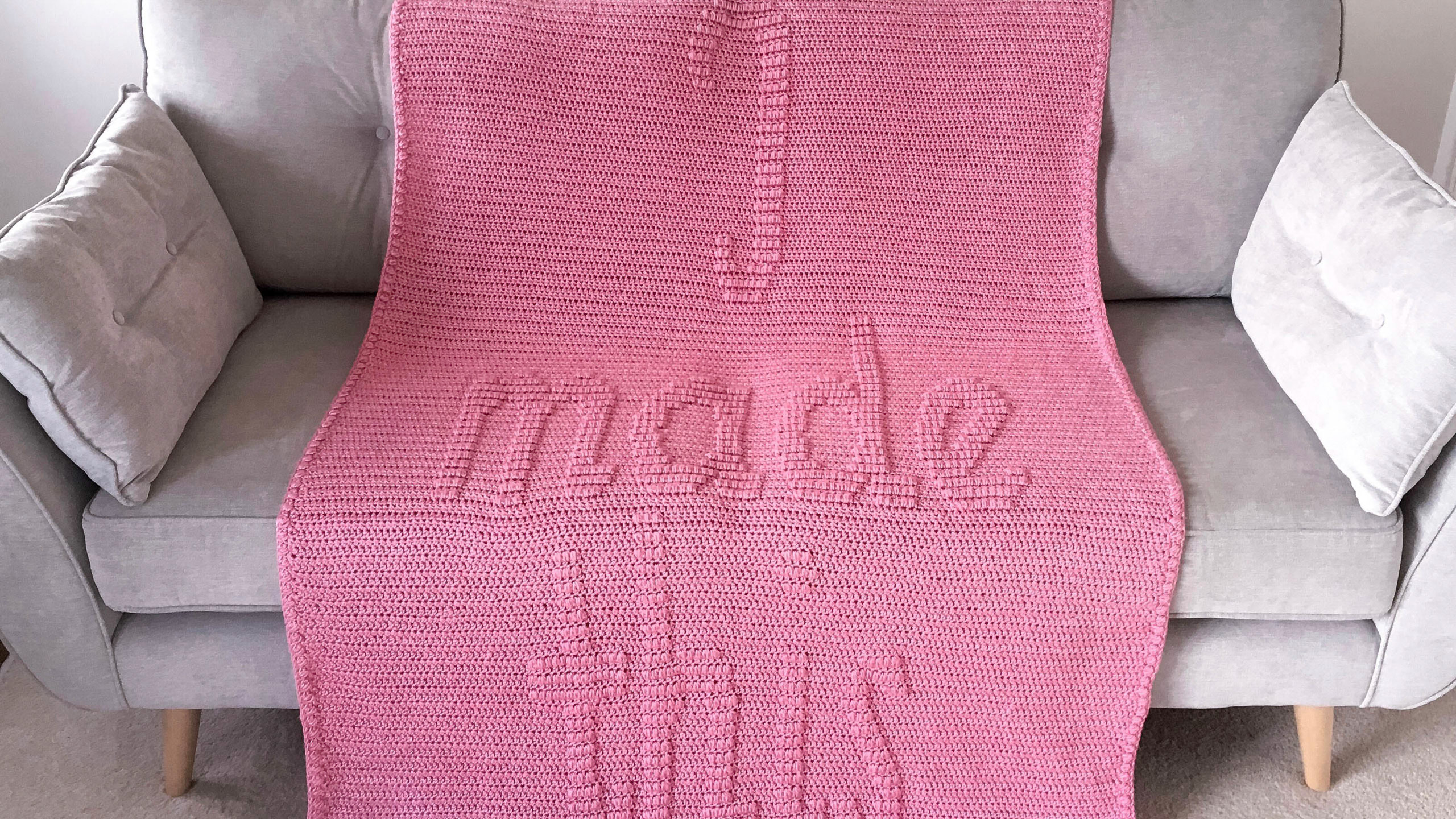
I love making crochet blankets, especially to gift to other people. Given the amount of time and effort that goes into them, crochet blankets are such a statement of love.
One of the things I always wondered about with blankets and afghans was how big they should be. I always kind of made up the dimensions in the past – with a centre out or motif based blanket, I tend to just crochet until I am happy with the size.
When making blankets that start with rows, I’d often eyeball the number of stitches in the first row, but this hasn’t always worked for me and sometimes I’ve needed to make a bigger than intended border to make up the size… sound familiar?
So I decided to do a bit of blanket size research and in this post I have collated some common afghan sizes AND a guide to how many stitches you’ll need to start any size blanket, based on your stitch gauge.

How big should a crochet blanket be?
Blanket size is normally categorised by intended function of the blanket.
The size chart below gives the ‘standard’ dimensions of different styles of blankets, afghans and throws (whether crocheted or otherwise).
I put standard in quote marks because there really is no such thing. Well there may be but the standards seem to vary from country to country. Bed and mattress sizes are standard for sure, but in my research, the sizes given for blankets to fit a standard bed varied, so please do take these as a general guide only.
Ultimately you can make your crochet blanket whatever size meets your needs.
One other thing to think about when deciding the size of your blanket is how stretchy your stitch pattern will be in combination with your chosen yarn / fibre. The best way to accommodate this is to make a swatch.
How many stitches do I need to make a crochet blanket?
When you’re making a blanket which is constructed by rows, the number of stitches in each row will determine the width of the blanket.
So before you start, you need to have an idea of how wide it should be and how many stitches you’ll need to achieve that width.
The number of stitches needed to start your blanket, whatever width you’re looking for, will depend on various factors including. Yarn weight, fibre, hook size and stitch pattern.
As I said in the introduction, you can just eyeball this, making a foundation row that looks about right, but often the width can shrink or grow from that first foundation row (whether it’s a chain or a chainless foundation row) as you make more rows.
So for those of you who want a little more accuracy, I have done the maths for you. All you need is to know your stitch gauge.
For clarification: Stitch gauge is the number of stitches of your chosen stitch pattern measured across a 10cm area.
You can learn more about gauge here.
The table below tells you how many stitches you will need to start your blanket, depending on your stitch gauge and the size you want to achieve.
To use this table, simply select the width of blanket you are looking for in the pink section. Then select your stitch gauge (based on the number of stitches over 10cm), from the blue section.
Read down the pink column and across the blue row, and where the two meet you’ll find the number of stitches needed to achieve your desired width. (You might need to zoom in a little on your browser!)
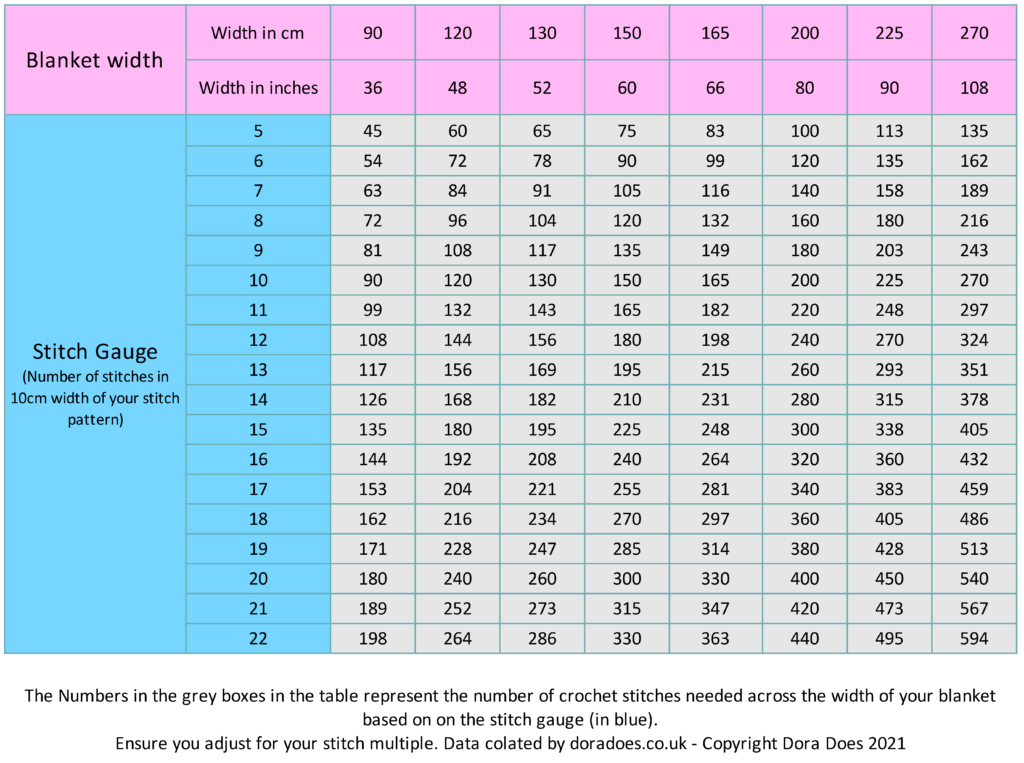
Note that this stitch count does not include a border. You will need to consider whether you’ll be adding one and adjust your stitch count to accommodate it.
If the crochet stitch pattern you have chosen uses a stitch multiple, you will need to adjust your stitch count to take this into consideration. Whether you round up or down is up to you.
Once you know the number of stitches you need, you can get started and just work your rows until your blanket reaches the length measurement you want.
If the blanket width in the pattern you have in mind is decided by rows, then you your stitch count will depend on the length of your blanket. Pick the measurement in the table which comes closest to the length you’re looking to start with and use the same method.
One other thing to consider is working with chevrons or zig zag patterns. When measuring your gauge on any kind of crochet pattern that isn’t straight, you need to count all the stitches up and down which take up 10cm, to ensure you get an accurate count.
Generally, I would expect you will need more stitches across in wave, zig zag or chevron patterns than a straight row of stitches.
If this approach to sizing floats your boat, you should check out a similar chart I have for crochet hat sizing.
What if you don’t know your stitch gauge?
If you want to plan with accuracy, then a gauge measurement is essential, but I know that people do not like making swatches.
So I thought about whether I could create some kind of chart giving a rough idea of how many stitches one would need of a specific stitch, for a range of blanket sizes, but when I started to think about adding yarn weights in, I realised it was not feasible.
The stitch count chart above is the closest ‘all in one’ guide I could create, but it does require that you know your stitch gauge.
What I have done however, is to create a very rough guide of ‘typical’ gauge measurements for a simple US double crochet (UK treble) for different yarn weights. I chose the double crochet as it’s probably the most common stitch used in blankets, in my experience at least.
These gauge measurements are based on my own tension over various crochet projects. I started keeping a ‘gauge diary’ a while ago, listing the kind of yarn, hook size, stitch pattern and gauge. I knew it would come in handy some day!
Below is the table showing an approximate stitch and row gauges for a double crochet based on different yarn weights and hook sizes.
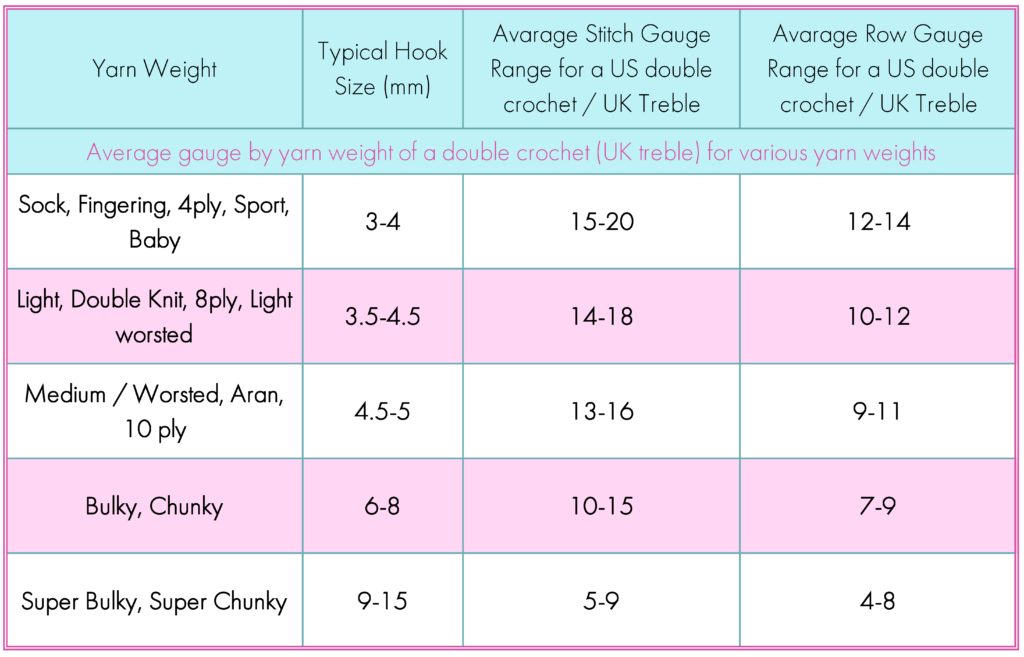
I have given a range in the gauge numbers because actual tension will very both between yarns, hooks and crocheters. This is a rough guide!
How to use the gauge guide with the stitch count chart
Let’s say you want to make a queen size blanket in Worsted Weight yarn and a 5mm crochet hook. The table shows a stitch gauge of 13-16 stitches. That is, every 10cm, you will make somewhere between 13 and 16 stitches.
In this example, I’m going to guess that you crochet on the tight size, so your double crochet stitch gauge is going to be closer to 16 stitches.
Using the stitch count table, you pick the queen size blanket column and read down, then read across the row for 16 stitches.
So you would need 360 stitches to achieve your blanket width.
That is a big ole blanket!
I hope that helps explain how to navigate the table.
How many motif squares do I need in my blanket?
Now I’ve covered the sizing of blankets crocheted in long rows, I want to touch on the approach you can use to calculate sizing when crocheting blankets with motifs.
It will tell you how to work out many crochet motifs you need to make any size blanket.

Step 1: Make 4 motifs and join them together as you would for your finished blanket.
Step 2: Measure the width (and length if your motif is not square), of each of the 4 motifs to get an average width including the join. Be careful not to double measure the join.
Step 3: Decide on the width of your blanket and divide it by the width of 1 motif.
The closest whole number of motifs will be the number you need to make to achieve the desired width.
Once again, if you plan to add a border to your blanket, I would round down, but this is your call!
Step 4: Repeat this process for the length of the blanket, using the length measurement of each motif if it is not square. Devide the desired length of your blanket by the length of each motif. This will give you the number of motifs needed to achieve that length.
Step 5: Multiply the number of motifs needed for the width by the number needed for the length. The answer will be the total number of motifs you need to make for your blanket.
This calculation would work for something like the bobble pop blanket or the little love granny squares, both free patterns.
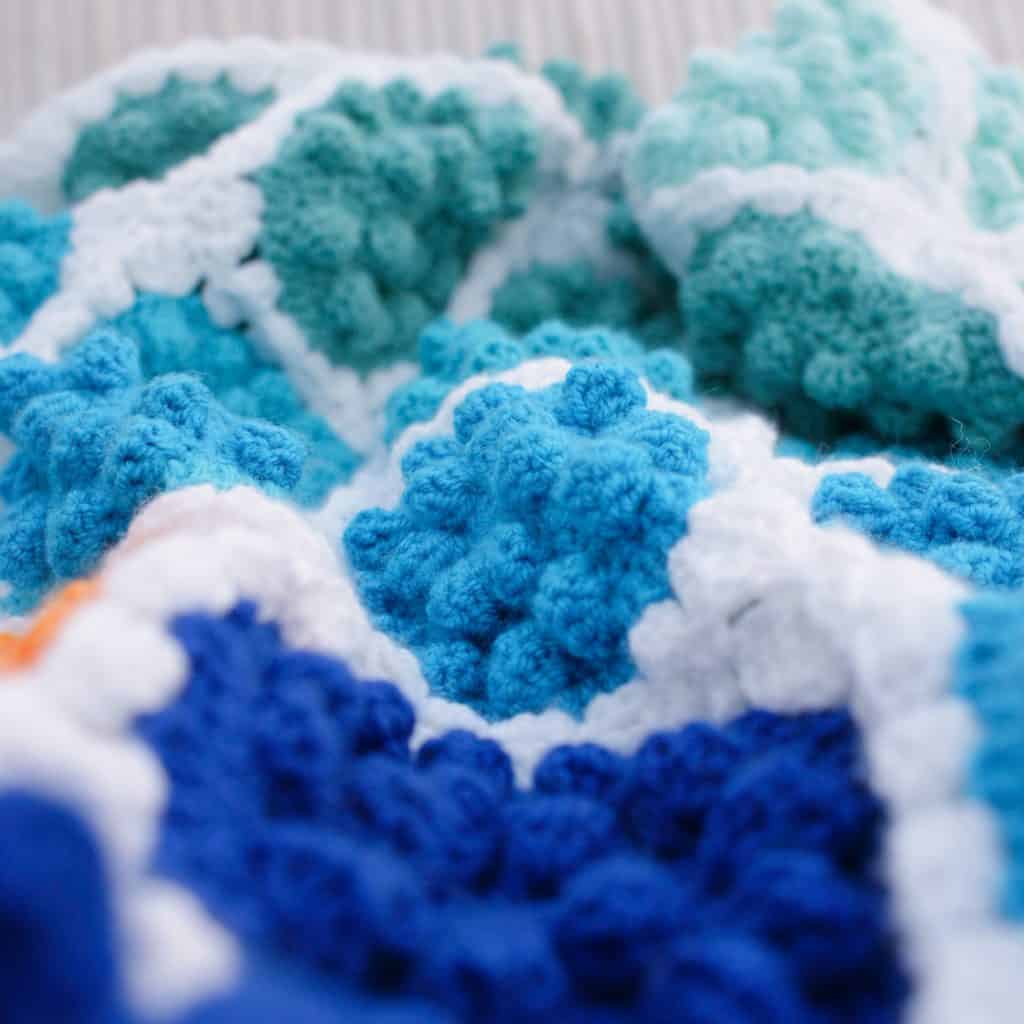
That’s really all there is to that. The key part people miss with motif blankets is not considering the joining method – it can add an unexpected amount of width and length!
I hope that you find this guide useful and feel ready to plan out your blanket with confidence.
If you’re looking for some stitch pattern inspiration for your next blanket, why not check out my top mindful crochet stitch patterns, or my favourite cosy crochet stitches, perfect for winter blankets.
Or, if you want to crochet a blanket from a pattern without doing any of the maths, you can check out my crochet blanket patterns here.
Happy Hooking
Dx
Copyright Dora Does Limited, Registered in England, Company Number 13992263. This pattern is for personal use only and may not be shared or reproduced in written, photo, video or any other form without prior written consent. All rights reserved. Terms of service.
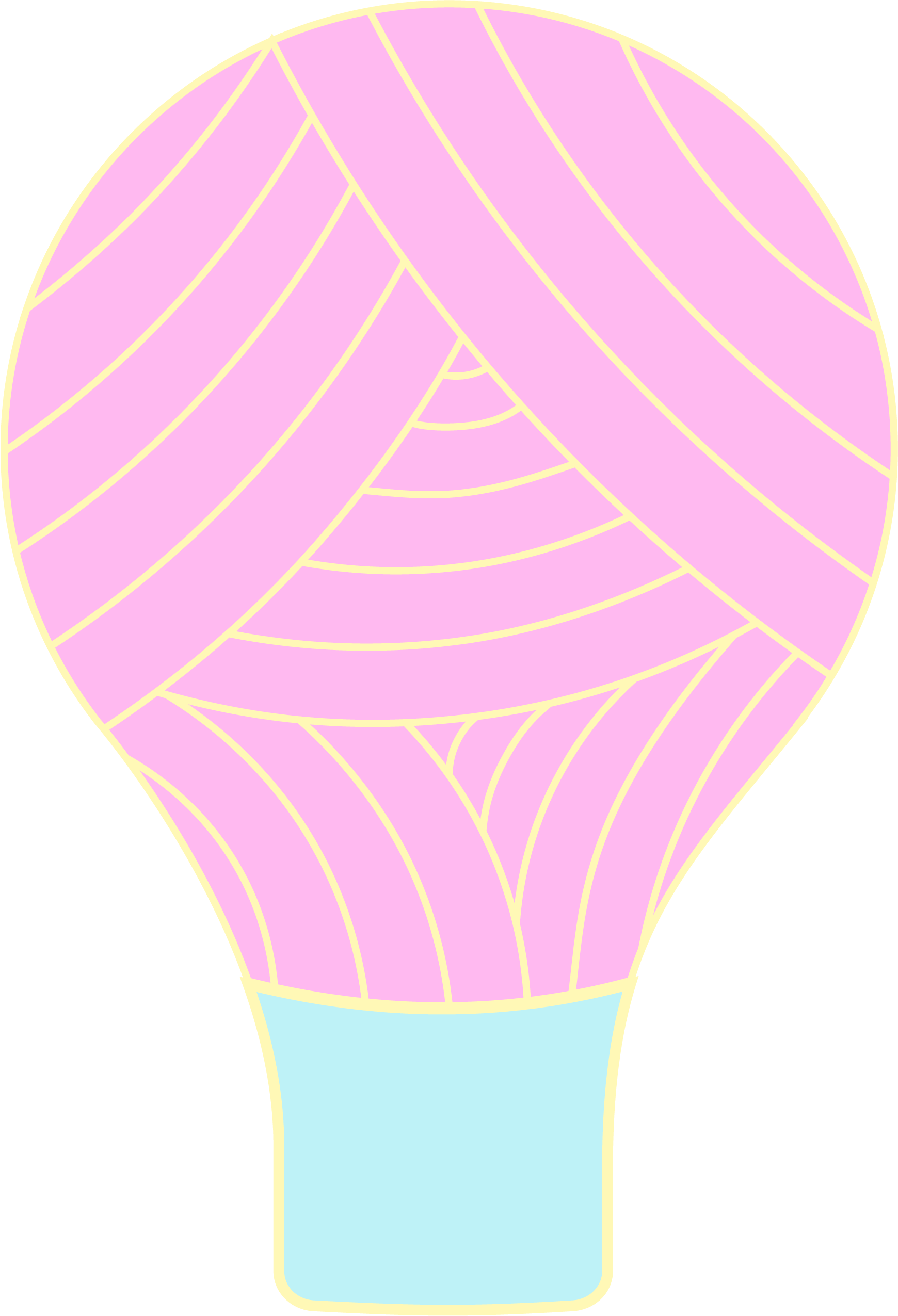
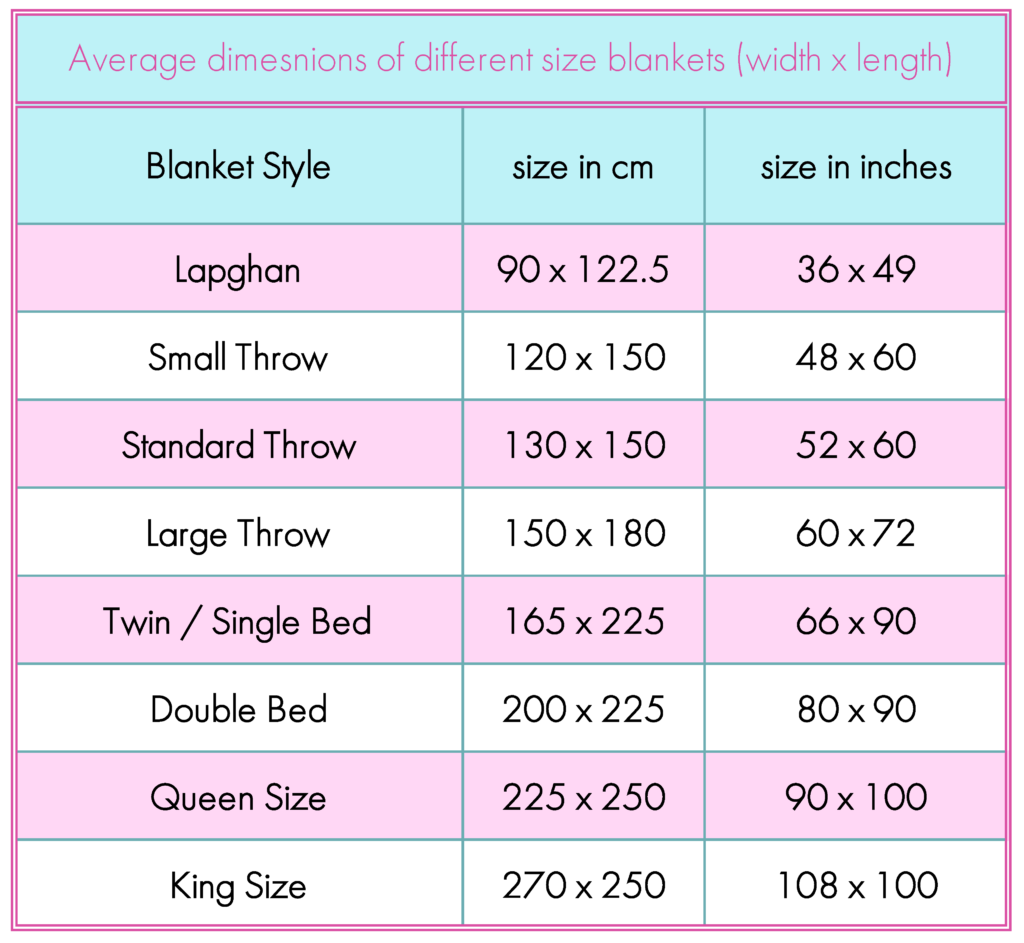







Thank you for your straightforward help on measurements and how to attain and keep accurate king-size crochet blankets. I have been through the constant “it’s so easy just measure and calculate” over and over! I don’t have time for that! Give me inches and number of stitches along with helpful hints and I’m ready to go…THANK YOU !
Thank you for your comment Shelby. You are precisely who I wrote this article for! (well also for myself I guess!!). Glad you find it a useful resource.
Dora
Is there anyway to figure out how many rows it will take to make a queen size bedspread? I used 360 chain stitches to get the width I need.
Hi there, there absolutely is. You will need to know what your row gauge is and how long you want the bedspread to be and then you can work it out. This post goes into detail step by step 🙂 https://doradoes.co.uk/2019/05/22/crochet-design-basics-how-to-use-gauge-to-crochet-to-measure-adjust-to-fit/
I am confused about the pink section in the chart for blanket widths and stitch counts for the various gauges.
Width in cm and Width in inches do not seem to jibe.
Hi, you’re quite right, there’s an error in the labelling – the inches and and cm are reversed! The larger number is cm and inches is the smaller number. I’ll add a note and get this corrected. Thanks for raising the question!
Dora